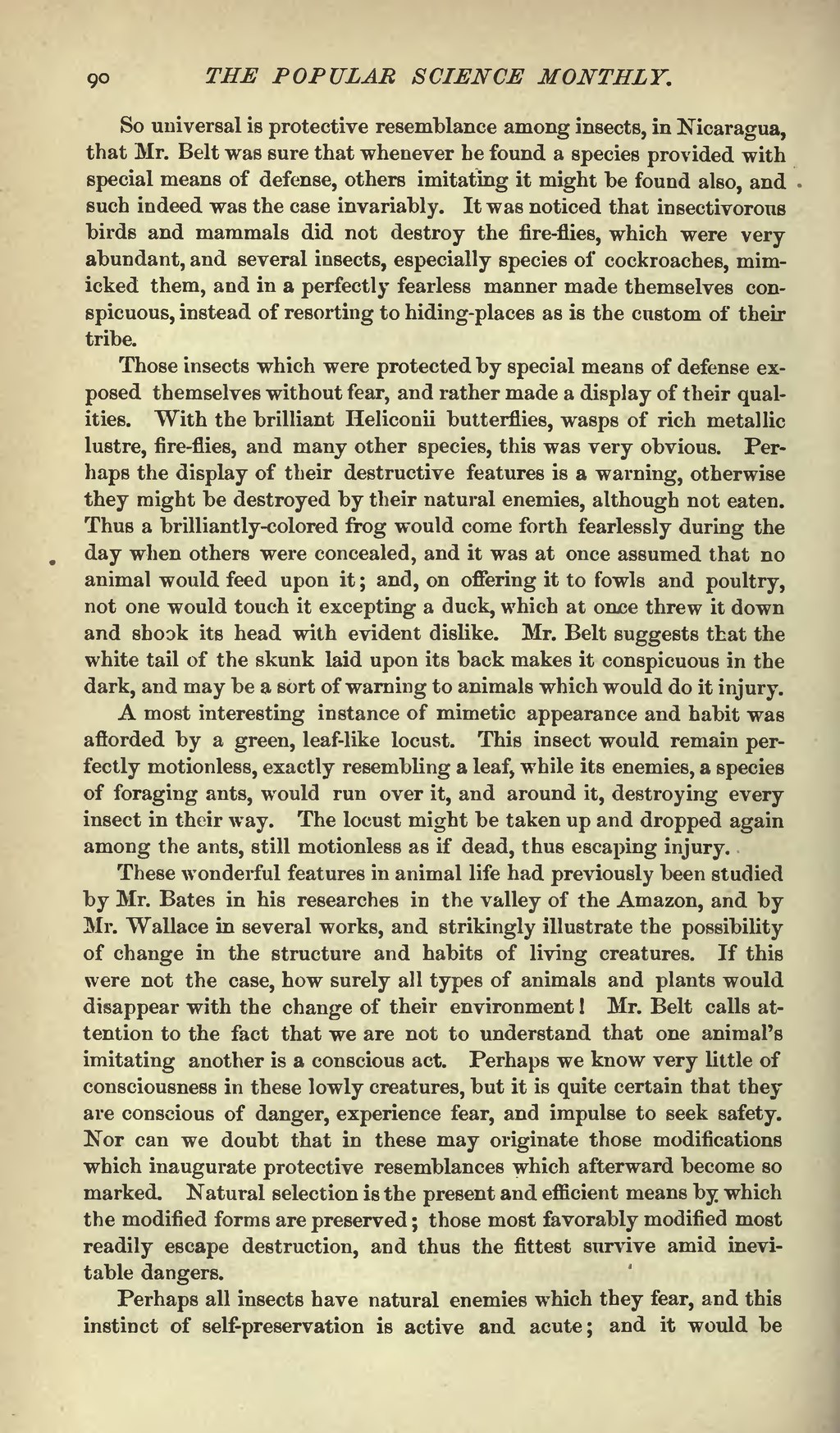So universal is protective resemblance among insects, in Nicaragua, that Mr. Belt was sure that whenever he found a species provided with special means of defense, others imitating it might be found also, and such indeed was the case invariably. It was noticed that insectivorous birds and mammals did not destroy the fire-flies, which were very abundant, and several insects, especially species of cockroaches, mimicked them, and in a perfectly fearless manner made themselves conspicuous, instead of resorting to hiding-places as is the custom of their tribe.
Those insects which were protected by special means of defense exposed themselves without fear, and rather made a display of their qualities. With the brilliant Heliconii butterflies, wasps of rich metallic lustre, fire-flies, and many other species, this was very obvious. Perhaps the display of their destructive features is a warning, otherwise they might be destroyed by their natural enemies, although not eaten. Thus a brilliantly-colored frog would come forth fearlessly during the day when others were concealed, and it was at once assumed that no animal would feed upon it; and, on offering it to fowls and poultry, not one would touch it excepting a duck, which at once threw it down and shook its head with evident dislike. Mr. Belt suggests that the white tail of the skunk laid upon its back makes it conspicuous in the dark, and may be a sort of warning to animals which would do it injury.
A most interesting instance of mimetic appearance and habit was afforded by a green, leaf-like locust. This insect would remain perfectly motionless, exactly resembling a leaf, while its enemies, a species of foraging ants, would run over it, and around it, destroying every insect in their way. The locust might be taken up and dropped again among the ants, still motionless as if dead, thus escaping injury.
These wonderful features in animal life had previously been studied by Mr. Bates in his researches in the valley of the Amazon, and by Mr. Wallace in several works, and strikingly illustrate the possibility of change in the structure and habits of living creatures. If this were not the case, how surely all types of animals and plants would disappear with the change of their environment! Mr. Belt calls attention to the fact that we are not to understand that one animal's imitating another is a conscious act. Perhaps we know very little of consciousness in these lowly creatures, but it is quite certain that they are conscious of danger, experience fear, and impulse to seek safety. Nor can we doubt that in these may originate those modifications which inaugurate protective resemblances which afterward become so marked. Natural selection is the present and efficient means by which the modified forms are preserved; those most favorably modified most readily escape destruction, and thus the fittest survive amid inevitable dangers.
Perhaps all insects have natural enemies which they fear, and this instinct of self-preservation is active and acute; and it would be
